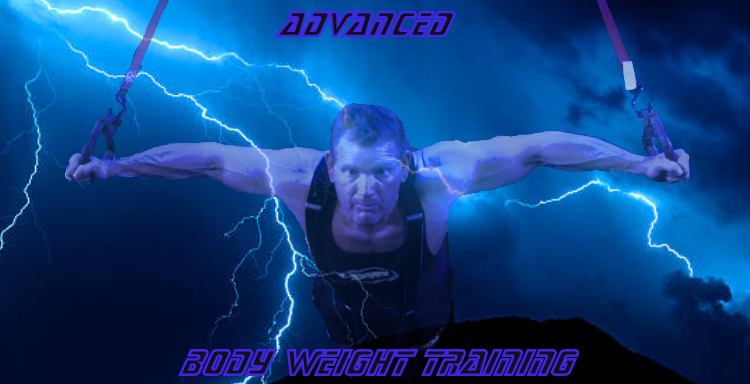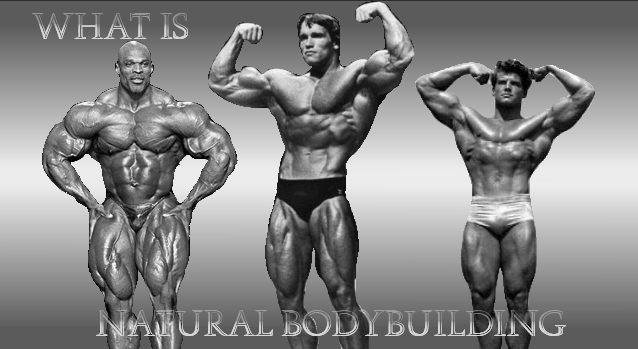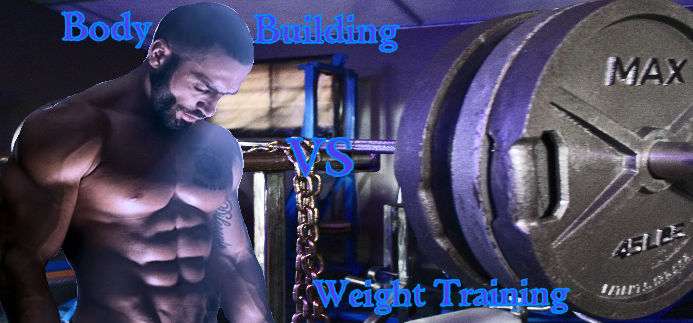Hiit Weight Training

Welcome to Hiit Weight Training; If you’re unsure of what (HIIT) represents, it merely stands for (high intensity training). Dynamic Weight Training puts this extraordinary workout effort under the microscope for the advanced lifters out there.
Theirs any number of ways to increase intensity in weight training, (high intensity weight training) is often associated too, but not always limited to; the increase of resistance in a routine – in other words, increasing resistance to increase muscle size and tendon strength.
But what happens - when simply increasing resistance workload leads us to an unbreakable plateau (which it inevitably does)! There’s no substitute for hard work to see increased results.
Dynamic weight training would like to introduce you to organizing and strategically adjust training timing and workload efficiency.
Where To Take Your Training Direction?

Weight Training itself is a large umbrella, for simplicity sake lets leave Power-lifting and or weight lifting for a future article.
For Illustrative purposes we’ll use Bodybuilding as the training method under the weight training umbrella. Bodybuilding works great in that the muscle groups and training exercises can be grouped, to produce faster consistent results.
Hiit Weight Training is a type of programming that you provide mentally in your training. 'In other words: a state of mind'!
Surprisingly a lot of men and women go to the gym often preforming the same types of modest training routines at medium intensity levels and expect training results to change.
E.g., (the workout typically goes something like this) – You preform 6 – 8 sets for each body part for 1 or 2 different body parts in a single training session, with a 45 – 120 second rest or longer between each set…
theirs nothing wrong with this type of workout if your putting in a solid effort…
This method actually works well in the early years of training but, as time and advancements are made in your training, results will begin to slow and eventually all but come to an end!
In order to see continuous results and put yourself back on track a more Hiit training method should be considered and adapted. After all (changing adaptation), is key in any training routine to continually see new achievements become reality.
Constantly changing your approach to your training routine, forcing muscle and tendon strength to re-adapt, is both mentally and physically demanding.
Muscle stamina, increased neural stress and increased oxygen deprivation are all part of Hiit weight training, going to the gym and training in this manner is anything but easy and should only be executed for 8 – 12 weeks at the outset.
Organizing Training Priorities

Let’s start with organizing training priorities:
Evaluate yourself; see where strong and weak points exist. Perhaps the chest area is weak or legs, or maybe it’s your upper back, start by always training them first and make a point of working the hell out of them…
For example: If you're noticing weaknesses in strength and muscularity in the upper legs:
Try changing your mind-set some; pick exercises that you don’t like or don’t often preform.
Use exercises that are the most demanding first: like Free squats, Hack squats or Angled leg presses – Increase resistance as you can handle it. If your form is suffering to much as a result of increasing resistance, then lower it and start with a little less, but increase reps and rep speed.
Some guys can become nervous of this type of training, 'thinking they don't want to be cardio jockeys' but...
using 5 or 10% less resistance but pushing 5 or 10% harder in the same exercise builds density, separation and muscle shape.
Try adding 1 or 2 extra sets to the exercises you find the most demanding or least preformed, is going to increase new strength in these areas. Demanding exercises often tell us where weaknesses lie in our muscularity and tendon strength.
How To Increase Weight Training Intensity?

Whether you
have a half-hour or over an hour to spend in the gym, Hiit weight training isn’t
about two-hour long workouts.
This type of training is intense, usually lasting from 40 – 80 mins is lots of time to ‘getter done’.
Typically, there’s three ways to introduce higher intensity levels:
1. Increase exercise resistance
2. Increase training volume
3. Shorten rest times between sets
This list may seem a little small at a glance, I can assure you with some imagination, and equal determination you can bend, manipulate and alter training strategies in the these listed, to see noticeable results.
You may even force yourself to rethink your training Intensity and discover how big this playing field really is?
Hiit Weight Training Strategies
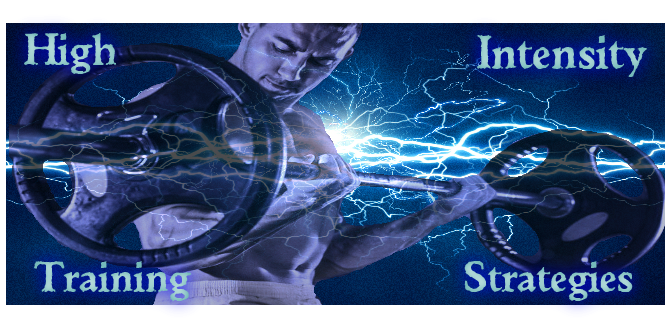
Training strategies are only limited by your imagination and ambition, if you want a well sculpted physic, bigger pipes or a thicker upper back or bigger chest cavity…
determination and a constant change in training strategies and intensifying training performance is the road to success for any goal you set!
Training with the many men and women I have over the years, one thing that always resonated true – was the ones who worked the hardest and continually challenged themselves, were always the ones that went on to achieve their goals!
So, lets move the intensity dial up and look at some different body parts and training strategies to intensify your training and increase results.
Intensifying Training Strategies For Upper Arm Weakness
Upper arms are typically easier to accomplish good training results but; if your struggling, here’s a few ideas to intensify your efforts. Try to keep sets at around twelve per body part. E.g., 10-12 for biceps – 12 - 14 for triceps.
1. Descending Sets e.g. Dumbbell hammer curls, keep enough resistance to allow for 8 – 10 reps, (once completed), immediately pick up ones 10 lbs. lighter, and belt out another set for 5 – 6 more reps, for a total of 4 times.
2. SuperSets e.g.

Biceps-wide grip curls + Triceps-skull crushers no rest between sets. Keep enough resistance to allow for 8 – 10 reps – for 4 sets for each body part.
3. Reducing Resistance e.g. Triceps-dips (parallel bars), use external resistance to complete 8 – 10 reps, then: lose the resistance using only your body weight and try for 4 or 5 more
Intensity Strategies to increase pectoral development
1 Rest Pause Sets e.g. Incline barbell bench press, allow enough resistance to complete 7 – 9 reps, on completion count to 10 or 12 then resume with the same weight for whatever you can get, back to back sets are always counted as one, preform 4 sets.

2. Tri-Sets e.g. Incline Dumbbell Presses, set dumbbell resistance for 8 – 10 reps, rest 5 – 8 seconds.
Next: Decline Dumbbell Presses, reduce resistance to accomplish 6 – 8 reps, rest 10 – 12 seconds. Last set - Incline Flyes, set DB. resistance to beat out 6 – 8 reps.
Each Tri-set is classed as one set, preform 3 – 4 in total.
Note: make no mistake; Tri-sets are volume based and intense as hell, the pump from this type of training is second to none, often requiring some sofa time when its over.
Intensity Strategies For Weak upper legs
1 Stripping Method e.g. Free Standing Barbell Squats, set resistance to allow 8 – 10 clean-form-reps; on completion - with (no rest), remove 10 – 15% of the resistance from the bar and immediately belt out another 5 or 6 reps.
2 Rest Pause-Alternating e.g.
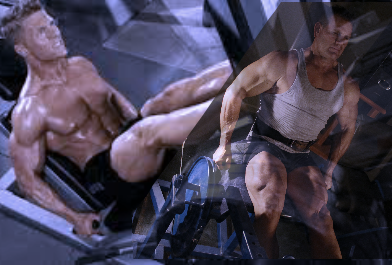
Angled Leg Sled, set resistance to allow 10 – 12 full range reps – push the hell outa them.
Rest by counting to 10 or 12 slowly, then...
immediately move to leg extensions – pointing the toes outwards with resistance set for 8 -10 reps hold and squeeze the resistance at the contraction point of each rep.
Strategies for Upper Back Weakness

1 Stripping Method e.g., T-Bar Rows, adjust resistance to allow for 8 -10 reps, on completion strip off 15 – 20% of the total resistance.
With no rest, preform a final set giving it your all for another 5 – 7 reps.
This exercise is one set, preform 4 sets total.
2 Switching Angles e.g.

Wide-grip lat pull-downs,
(pulling to the rear), adjust resistance to allow for 8 -10
reps, on completion switch to a bar that allows (a wide grip), palms facing one
another.
With no rest using the same resistance, immediately pound-out another 5 – 7 reps pulling to the front or (upper chest).
Note: always try to keep training volume and intensity high, this is always a sure-fire-way to keep those muscles adapting and growing.
Also Note: Try Interchanging and experimenting with these training strategies! At least until you find what works best for each body part. Also try changing exercise combinations, while altering training angles and rep speeds.
Time Constraints And Busy Lifestyles
Sometimes despite our best efforts life - even enthusiastic training efforts can get in the way of one another.

Hiit training solves training delays by approaching the gym with a shorter work strategy:
a 40 - 60 min workout, doubling-up on exercise while reducing rest intervals provides not just a dynamic muscle-shock-response, but also gets you out of the gym faster… with noticeable results that last.
Our fast-paced world dictates a busier lifestyle, often decreasing the time we a-lot for the gym. Hiit weight training does two things…
First: Keeping intensity Hi-removes boredom, training efforts become realized once more, and training vigor and enthusiasm becomes renewed.
Second: extended workouts often creates training-burnout and eventually boredom, Hiit weight training is the game changer once modest training methods have been exhausted, ultimately breathing new life into any new advanced athletic routine.
Hiit training is what Sprinting is to running – look closely at a sprinters physic and compare it to longer distance runners? You can easily see the differences. Keeping the intensity high, in short bursts - is the corner stone of seeing new increased results.
Concluding:
Going to the gym and heaving extra weight around might seem like a great way to solve the whole intensity issue, but…
I assure you its not; only a concentrated effort of exercising control throughout training duration and focusing on each contraction, and not leaving till your beat - is what’s gonna show when you pull your shirt off.
I kid you not, dynamic training strategies demand intense physical and mental effort. If you have come up against a training plateau recently, or have been stuck in one for a while, give some or even all of these strategies an honest try.
Or if you’ve looked the article over and thought this might be a bit too much, or your time may be spent better elsewhere – then your probably right and you’ll certainly save yourself a lot of work.
Looking back over the decades of training, not some-but all my achievements were made from two things… changing exercise verity and challenging myself in every exercise. Try stepping it up a notch and see new changes when you challenge yourself with Hiit weight training.
DWT



